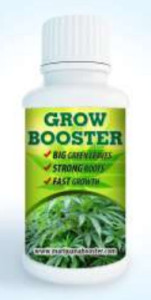Archive for the ‘Soil’ Category
Down with dirt
Growth medium
Soil is required, except for cannabis grown with hydroponics or aeroponics
Sufficient nutrients—commercial potting soils usually indicate this as “N-P-K = x%-y%-z%” the percentages of the fundamental nutritional elements, i.e., nitrogen, phosphorus and potassium. Nutrients are often provided to the soil via fertilizers but such practice requires caution.
pH between 5.9 and 6.5. This value can be adjusted – see soil pH. Commercial fertilizers (even organic) tend to make the soil more acidic (decrease its pH).
Warmth
The optimal day temperature range for cannabis is 24 to 30 °C (75 to 86 °F). Temperatures above 31 °C and below 15.5 °C seem to decrease THC potency and slow growth. At 13 °C the plant undergoes a mild shock, though some strains withstand frost temporarily. Frost occurs when air temperatures dip below 0 °C (32 °F) and ice crystals form.
Light
Light can be natural (outdoor growing) or artificial (indoor growing).
Under artificial light, the plant typically remains under a regime of 16–20 hours of light and 4–8 hours of darkness from the germination until flowering, although the plant can use a full 24 hours of light without harm. There is an ongoing debate over the importance of the “dark period”. It has been shown that, when subjected to a regimen of constant light without a dark period, most types of flora, including Cannabis, will begin to show signs of decreased photosynthetic response, lack of vigor, and an overall decrease in vascular development. There is no defined flowering “stage”, unless you are discussing an auto-flowering variety (Cannabis Ruderalis). Typically, flowering is induced by changing the light schedule to 12 hours of light and 12 hours of darkness. Flowering in cannabis is triggered by a hormonal reaction within the plant that is initiated by an increase in its dark cycle, i.e. the plant needs sufficient prolonged darkness for bract/bracteole (flowering) to begin. Some Indica varieties require as little as 8 hours of dark to begin flowering, whereas some Sativa varieties require up to 13 hours.
Water
Watering frequency and amount is determined by many factors, including temperature and light, the age, size and stage of growth of the plant and the medium’s ability to retain water. A conspicuous sign of water problems is the downward wilting of leaves. Too much water can kill young cannabis plants.
The additives in municipal water can reduce plant growth and can be removed with reverse osmosis filtration but is expensive and produces poorer results than well or spring water.
Growing Bigger Buds with Marijuana Booster
 Whether you’re growing marijuana for personal use or you’re looking to make a little extra money on the side, you always want to have the biggest buds. The buds are where you get the most “meat” on the marijuana plant, and you’ll certainly be able to enjoy the fruits of your labor for much longer with bigger buds. But, achieving big buds isn’t always a matter of plant genetics or complete luck. You have to put in a lot of effort, and you have to understand exactly what the plant needs at each stage of its life.
Whether you’re growing marijuana for personal use or you’re looking to make a little extra money on the side, you always want to have the biggest buds. The buds are where you get the most “meat” on the marijuana plant, and you’ll certainly be able to enjoy the fruits of your labor for much longer with bigger buds. But, achieving big buds isn’t always a matter of plant genetics or complete luck. You have to put in a lot of effort, and you have to understand exactly what the plant needs at each stage of its life.
 For starters, you have to understand the basics of nutrient uptake within the plant. Nutrients act like food for the plant to thrive and grow tall. Of course, nutrients are also largely responsible for the size of the buds by the time the harvest comes around. Nutrients aren’t the only variable, but they’re wildly important. The main triplet of nutrients that you’ll often come across in most fertilizers consists of nitrogen (N), phosphorus (P), and potassium (K). On most fertilizers, there is a little “NPK” value that indicates how much of each nutrient is in the fertilizer. For the most part, you’ll want a fertilizer with a higher concentration of nitrogen during vegetative state. Nitrogen is primarily responsible for the overall growth and healthy function of the plant. It helps the plant thrive during vegetative state and it also sets the stage for success once your plants enter the flowering stage. When a plant reaches flowering stage, they require a different kind of fertilizer concentration, one that is higher in phosphorus and potassium than nitrogen. At that point, it’s a good idea to switch to a “bloom fertilizer” to help out with bud
For starters, you have to understand the basics of nutrient uptake within the plant. Nutrients act like food for the plant to thrive and grow tall. Of course, nutrients are also largely responsible for the size of the buds by the time the harvest comes around. Nutrients aren’t the only variable, but they’re wildly important. The main triplet of nutrients that you’ll often come across in most fertilizers consists of nitrogen (N), phosphorus (P), and potassium (K). On most fertilizers, there is a little “NPK” value that indicates how much of each nutrient is in the fertilizer. For the most part, you’ll want a fertilizer with a higher concentration of nitrogen during vegetative state. Nitrogen is primarily responsible for the overall growth and healthy function of the plant. It helps the plant thrive during vegetative state and it also sets the stage for success once your plants enter the flowering stage. When a plant reaches flowering stage, they require a different kind of fertilizer concentration, one that is higher in phosphorus and potassium than nitrogen. At that point, it’s a good idea to switch to a “bloom fertilizer” to help out with bud
growth.
The Benefits of Marijuana Booster
 This is really the traditional way to grow larger buds, and it has worked to a certain degree for years. But, there are a lot more than just three nutrients at play in fertilizers and inside the living marijuana plant. It can be hard to hit the right balance of nutrients during vegetative state and flowering state. If you could find a fertilizer product that would take the nutrient guesswork out of your hands, then you’d probably jump at that opportunity. One such product is Marijuana Booster, a revolutionary growth program that can guarantee you a good return on your investment. If you want bigger buds from your harvest, then Marijuana Booster can certainly help out.
This is really the traditional way to grow larger buds, and it has worked to a certain degree for years. But, there are a lot more than just three nutrients at play in fertilizers and inside the living marijuana plant. It can be hard to hit the right balance of nutrients during vegetative state and flowering state. If you could find a fertilizer product that would take the nutrient guesswork out of your hands, then you’d probably jump at that opportunity. One such product is Marijuana Booster, a revolutionary growth program that can guarantee you a good return on your investment. If you want bigger buds from your harvest, then Marijuana Booster can certainly help out.
It does so by providing a large mix of nutrients that are best suited to growing large, healthy plants with large, healthy buds. You won’t just find the standard “NPK” nutrients in Marijuana Booster. You’ll encounter plenty of micronutrients like boron, manganese, calcium, and more. Marijuana Booster is essentially the perfect mixture of nutrients to help marijuana grow to its fullest capacity with huge buds dripping with THC. It also comes with a feeding and watering schedule to help you along the way. If you want to get ahead of the game, then Marijuana Booster gives you the best option.



